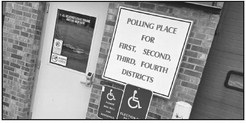It is time to rethink percentage based wage increases
Medford alderman Dave Roiger is correct in questioning the longstanding process of giving blanket percentage based wage increases to city employees.
Roiger raised questions about giving across-theboard percentage based wage increases to staff over concerns that it widens the pay gap between higher wage positions and lower wage ones. It leads to bloated salaries at the top of the administrative food chain and leaves entry level workers scrambling for the proverbial crumbs left over, never able to catch up.
Every year about this time, municipalities, school districts and other employers, both public and private, begin to think about potential wage increases for the coming year.
This is typically done in two steps. The first looks at the overall amount of money available for wages in the organization’s budget while the second step looks at how that pool is divided up among individual employees based on job titles and classifications.
Some employers, such as Taylor County, have elaborate job rating grids in place which breaks out employees based on job duties, certification requirements and supervisory level. This makes sense for an organization as diverse as the county with many different types of job functions. Other public employers, such as school districts, may utilize grids taking into account factors such as longevity and additional certifications earned. Other employers, such as the city of Medford, pool all the employees together.
The main justification for percentage-based wage increases is the false concept that it creates some sort of parity. In reality it rewards those higher in the pay scale with a larger increase in actual dollars than those lower in the pay scale.
Let’s say there is a supervisory staff member hired at a salary of $60,000 per year and a worker in the same department who is making $35,000 per year. Each receives a 2% raise, meaning the supervisory employee gets a $1,200 boost compared to the worker’s $700 increase. This has the consequence of increasing the pay differential between the two positions by about $500, an amount that grows every year. The gap becomes even more exaggerated when taking into account higher base salaries such as those paid to top level public employees and becomes grossly exaggerated when looking to the obscene pay levels of corporate CEOs compared to workers on the factory or retail floor.
It is a reality that some positions, due to responsibilities, training or skill level are more highly compensated than others. That is factored into the pay differential in the base wages.
A more equitable approach to wages is to look at flatlevel wage increases dividing the available funds for salary and wage increases across the employees. Using the same example as earlier, this would result in each receiving a $950 wage increase.
Rather than compounding the differences between public employee pay grades and bloating public payrolls, policymakers should look instead to set dollar amount increases as being more equitable to all public employees.




